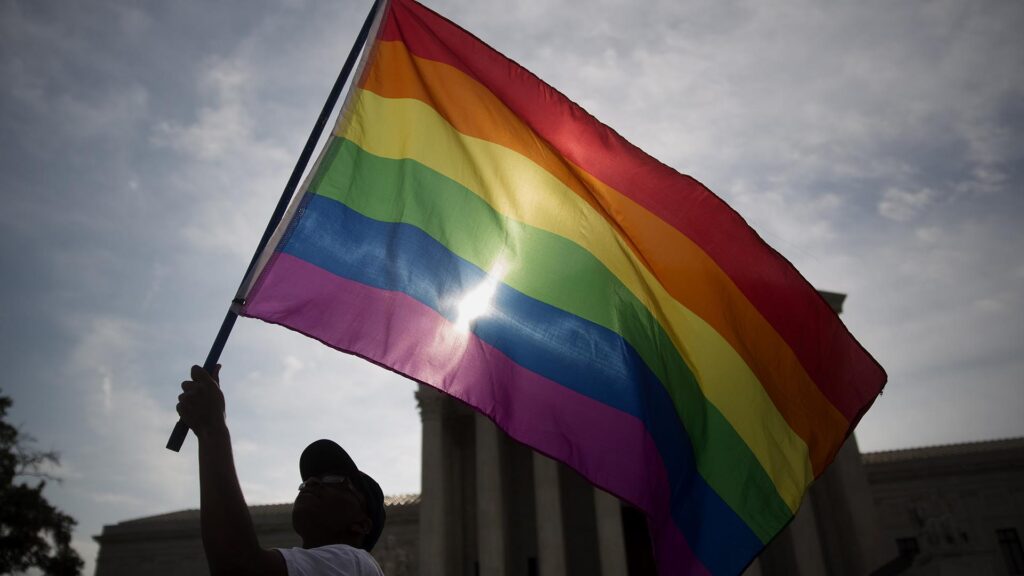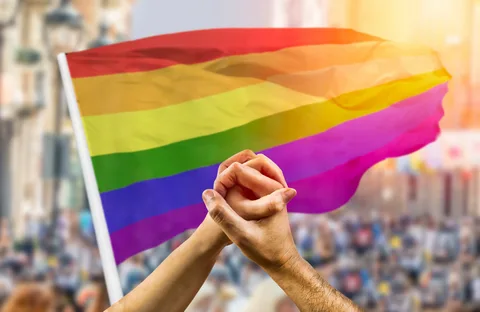
In literature, LGBTQ fiction stands as a powerful testament to the rich diversity of human experience. It encompasses narratives that delve into the lives, struggles, and triumphs of lesbian, gay, bisexual, transgender, and queer individuals. As society progresses towards greater acceptance and understanding of LGBTQ relationships, representing these voices in literature becomes increasingly significant. In this exploration, we delve into what LGBTQ fiction entails, its evolution, its impact on readers and society, and the importance of embracing and celebrating these narratives.
Defining LGBTQ Fiction

LGBTQ fiction encompasses a broad spectrum of literary works centered on characters and themes related to non-heteronormative sexual orientations and gender identities. These narratives may feature protagonists who identify as lesbian, gay, bisexual, transgender, queer, questioning, intersex, asexual, or any other identity within the LGBTQ relationships spectrum. The genre spans various literary forms, including novels, short stories, poetry, plays, and graphic novels, offering diverse voices and perspectives.
At its core, LGBTQ fiction seeks to reflect the lived experiences of individuals whose identities and relationships may differ from societal norms. These stories explore themes of love, identity, family, acceptance, discrimination, and resilience, providing readers with insights into the joys and challenges of LGBTQ+ life.
Impact and Importance
The impact and importance of LGBTQ fiction are multifaceted, reaching both individuals and society. Here is how LGBTQ fiction influences readers and contributes to broader social and cultural conversations:
- Representation and Validation: LGBTQ fiction provides much-needed representation for individuals who identify as lesbian, gay, bisexual, transgender, queer, or any other non-heteronormative identity. Seeing characters who reflect their own experiences, struggles, and triumphs validates their identities and fosters a sense of belonging. This representation is particularly crucial for LGBTQ youth, who may feel isolated or marginalized in a heteronormative society. By showcasing diverse LGBTQ characters and narratives, fiction helps affirm the lived experiences of LGBTQ individuals and validates the validity of their identities.
- Empathy and Understanding: LGBTQ fiction can cultivate empathy and understanding among readers, regardless of their sexual orientation or gender identity. By immersing themselves in the lives and perspectives of LGBTQ characters, readers can develop greater compassion and empathy for individuals whose experiences may differ. This increased understanding can break down stereotypes, challenge prejudice, and foster inclusive attitudes towards the LGBTQ community. Through literature, readers can walk in the shoes of LGBTQ characters, experiencing their joys, struggles, and humanity firsthand.
- Education and Awareness: LGBTQ fiction is valuable for raising awareness about LGBTQ issues, identities, and experiences. Through storytelling, authors can explore complex topics such as coming out, gender identity, discrimination, and intersectionality in accessible and engaging ways. Readers with limited exposure to LGBTQ individuals or communities can gain insights into their lives and challenges through literature. This exposure can help dispel myths, combat ignorance, and promote understanding of the diversity within the LGBTQ community.
- Cultural and Social Change: LGBTQ fiction has significantly driven cultural and social change by challenging prevailing attitudes and norms surrounding sexuality and gender. Through literature, authors have addressed taboo subjects, confronted stereotypes, and advocated for LGBTQ rights and visibility.
- Community Building and Solidarity: LGBTQ fiction fosters community and solidarity among LGBTQ individuals and allies, providing a platform for shared experiences and collective empowerment. Readers who identify as LGBTQ may find solace and connection in literature reflecting their identities and struggles. LGBTQ relationship fiction can serve as a form of cultural expression and resistance, celebrating the resilience and diversity of the LGBTQ community. Through literature, LGBTQ individuals can find support, inspiration, and affirmation of their identities, fostering a sense of pride and belonging.
Challenges and Controversies

Challenges and controversies surrounding LGBTQ fiction underscore the complex intersection of literature, identity, and social dynamics. While LGBTQ fiction plays a crucial role in representing marginalized voices and promoting empathy, understanding, and acceptance, it also faces various obstacles and criticisms. Here are some key challenges and controversies associated with LGBTQ fiction:
- Censorship and Banning: LGBTQ-themed books often face censorship and bans in schools, libraries, and communities, particularly in conservative or religiously-influenced environments. Some individuals and groups object to the content of these books, viewing them as inappropriate or morally objectionable. This censorship deprives readers, particularly young people, of access to diverse perspectives and experiences.
- Backlash and Controversy: Works of LGBTQ fiction may provoke backlash and controversy due to their content, themes, or portrayal of LGBTQ relationships and characters. Authors and publishers may face criticism, boycotts, or even threats of violence from individuals who oppose LGBTQ rights or perceive the literature as promoting a “gay agenda.” Such controversies highlight broader societal attitudes toward LGBTQ identities and the ongoing struggle for acceptance and equality.
- Representation and Authenticity: LGBTQ fiction is not immune to critiques regarding representation, authenticity, and diversity within the genre. Some works may perpetuate stereotypes, exoticize LGBTQ experiences, or overlook the intersectional identities of LGBTQ individuals from diverse backgrounds. Critics argue for greater inclusion of marginalized voices, nuanced portrayals of LGBTQ identities, and representation beyond tokenism or sensationalism.
- Market Accessibility and Visibility: Despite growing acceptance and interest in LGBTQ fiction, accessing and promoting these books can still be challenging. Mainstream publishing industries may prioritize certain narratives or genres over LGBTQ-themed works, leading to limited visibility and distribution for LGBTQ authors. This lack of representation in mainstream media perpetuates the marginalization of LGBTQ voices and stories.
- Intersectionality and Inclusivity: LGBTQ fiction often grapples with issues of intersectionality and inclusivity, recognizing that LGBTQ identities intersect with other aspects of identity, such as race, ethnicity, class, disability, and nationality. Critics argue that some works fail to adequately address these intersections, focusing primarily on white, cisgender, middle-class experiences while marginalizing or erasing the voices of LGBTQ individuals from marginalized communities.
The Future of LGBTQ Fiction
As society continues to evolve, so will the landscape of LGBTQ fiction. The future holds boundless possibilities for new voices, stories, and perspectives to emerge, enriching the genre with their creativity and authenticity. Increasing visibility and acceptance of LGBTQ+ identities in mainstream culture will likely lead to greater diversity and representation in literature, reflecting the complexities and nuances of queer life in all its forms.
Additionally, technological advancements and publishing platforms offer unprecedented opportunities for LGBTQ authors to share their stories with global audiences. Online communities, digital publishing, and social media have democratized access to literature, allowing marginalized voices to reach readers who may not have encountered LGBTQ fiction otherwise.
However, challenges persist, and the fight for LGBTQ rights and representation remains ongoing. Readers, writers, educators, publishers, and activists must continue advocating for LGBTQ voices, challenging stereotypes, and championing diverse narratives in literature and beyond.
Sums Up
LGBTQ fiction occupies a vital and dynamic space within the literary landscape, offering readers a rich tapestry of experiences, perspectives, and emotions to explore. By embracing and celebrating the LGBTQ relationships narrative, we enrich our understanding of human diversity and contribute to a more inclusive and empathetic society. As we look towards the future, let us continue to amplify LGBTQ voices, challenge injustice, and cultivate a world where everyone’s story is valued and respected.
Frequently Asked Question
1. What exactly is LGBTQ fiction?
LGBTQ fiction refers to literature that features characters, themes, and narratives centered around lesbian, gay, bisexual, transgender, and queer identities. These stories explore various experiences, relationships, and challenges within the LGBTQ+ community.
2. Why is LGBTQ fiction important?
LGBTQ fiction is a powerful tool for representation, validation, and empathy. It provides LGBTQ+ individuals a sense of belonging and affirmation while educating and fostering understanding among readers who may not identify as LGBTQ+.
3. Are LGBTQ fiction and queer literature the same thing?
While both terms often overlap, LGBTQ fiction encompasses a broader range of genres and styles, including novels, short stories, poetry, and graphic novels. Queer literature may refer specifically to works that challenge heteronormativity and embrace non-conformity in both content and form.
4. How has LGBTQ fiction evolved?
LGBTQ fiction has evolved significantly, moving from coded or veiled representations in earlier works to more authentic and diverse portrayals in contemporary literature. The genre has expanded to include voices from marginalized communities, reflecting the growing visibility and acceptance of LGBTQ+ identities.
5. What challenges does LGBTQ fiction face?
LGBTQ fiction continues to face challenges such as censorship, limited representation, and stereotypes within the genre. Efforts to ban or restrict LGBTQ-themed books and criticisms regarding authenticity and diversity highlight the ongoing need for advocacy and inclusion in literature.
